
Review on 💡 gofanco Prophecy Intelligent 4K HDMI 1x4 Splitter - Auto Scaling, HDCP 2.2, 18Gbps - 4 Port, 1 In 4 Out by Marcel Robinson

EDID emulation is not 100%
I've spent the last week testing three competing products and I'll post this review under all three for those looking for the same functionality as me . I just bought an Nvidia Shield because I read that it was one of the few set-top boxes that could stream uncompressed Dolby TrueHD and DTS-MA audio from apps like Plex to compatible receivers. I have a 2017 Vizio M75-E1 TV and an old Denon 3808CI AVR receiver. The Vizio can handle 4K HDR, while the Denon can handle TrueHD and DTS-MA, so I was hoping the Shield could send a 4K HDR signal to a TV and uncompressed audio to a receiver. Unfortunately, the Denon can't pass a 4K signal to the TV, the TV can't pass uncompressed audio to the Denon, and the Shield only has an HDMI output, so I knew I was going to need some sort of splitter. three promising options that all did the same thing: accept an HDMI input and send its signal to two devices. The tricky part is the EDID emulation. I needed a splitter that would send the Shield an EDID representing the best characteristics of both the TV and the receiver so the Shield would send the best picture and sound. Here are my three options and what I found: 1. ViewHD VHD-UHAE2: For around $60, this device seemed to do exactly what I needed on paper. The problem was that none of the EDID options could display the best of both my TV and my receiver at the same time. This left me with two options: either send 4K without HDR to my TV, or send TrueHD and DTS-MA to my receiver; or send 4K HDR to my TV but need to use the SPMC Plex app to decode TrueHD and DTS-MA to PCM5.1 to downgrade to my receiver). So it basically worked, but it required more grooming, feeding, and compromises than I was hoping for. 2. Egreat H10: At $120, this device costs about twice as much as the other two. It claims to get the best out of each of the devices it's connected to and use it to create the optimal EDID, and in my case it did just that. It was literally plug and play. I plugged it in and the Shield presented me with the same resolution/color options as it would when connected directly to the TV, and each video app I used automatically started sending the best available audio stream to my receiver for each video. 3. Gofanco Prophecy: This device was a little different from the others in that it was designed to send identical signals to two devices rather than splitting the signal into two audio and video parts, so I'm not really his usual audience. However, it's about the same price as the UHAE2 and does a good job. This device allows you to create your own EDID by selecting the DIP switches, but this part was easy for me as it defaults to the highest quality settings. When I plugged it in, I got near-perfect resolution and color settings (close enough that I couldn't tell any quality difference from what the TV was capable of), but Plex didn't send uncompressed audio. However, the SPMC Plex app streamed TrueHD and DTS-MA after I tweaked it a bit, so it mostly accomplished the mission. In the end I can safely say that I was disappointed with the capabilities of the EDID UHAE2 and that the Egreat did exactly what I wanted without any problems, albeit at a much higher price. I'm tempted to keep Gofanco and deal with the inconvenience of having to use the SPMC Plex app instead of the regular one to save $60, but I'll probably swallow the extra cost of Egreat to have a solution that I don't have to consider or circumvent. In case anyone has devices in common with me, here are a few pitfalls I fell into along the way: 1. It's been years since I sent a still encrypted TrueHD stream to my Denon and this had a strange effect: some channels were sent to the wrong speakers, and others disappeared altogether. I have never updated the firmware of my Denon in almost ten years of owning it so I plugged the Denon into the mains and tried it and luckily it completely solved the problem. 2. In order for the Vizio to accept 4K HDR input I needed to know two things that I couldn't find in the product manual: It can only accept 4K HDR over HDMI1 since that's its only HDCP2.2 interface (the others are 1.4 ). ); and I had to adjust the settings for HDMI1 to allow full color (why this isn't set by default I have no idea). The shield didn't give me the full range of color options until I got it right.
- Accessories and consumables
- New competitors are here
New products
Comments (0)
Top products in 📡 Satellite Television
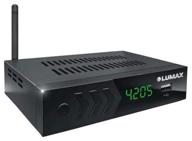
TV tuner LUMAX DV-4205HD black

46 Review
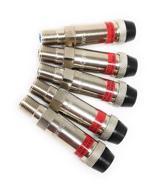
MoCA Filter 5-Pack for Optimal Cable TV & OTA Coaxial Network Performance

11 Review

High Performance Extreme Broadband Manufacturing BDA103HB 3-Way Balanced HD Digital Coax Cable Splitter, 1GHz

11 Review
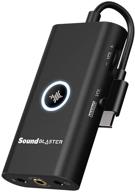
Enhance Your Gaming Experience with the Creative Sound Blaster G3 USB-C External Gaming 🔊 USB DAC and Amp: PS4, Nintendo Switch Compatible, GameVoice Mix, Mic/Vol Control, and Mobile App Control

11 Review
Another interesting products
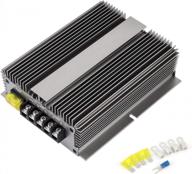
HOMELYLIFE 600W High Power Voltage Reducer DC 48V 60V 72V Step Down To DC 12V 50A Buck Converter Waterproof Module Car Truck Power Regulator Transformer

12 Review

TV Tuner LUMAX DV-2120HD

15 Review

Germany France Travel Power Adapter,TESSAN Schuko Plug With 2 USB Ports 2 AC Outlets, US To European Europe German French Spain Iceland Norway Russia Korea Adaptor(Type E/F)

17 Review
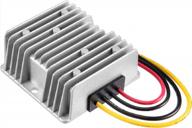
Kohree 36V To 12V DC/DC Converter Regulator - 10A 120W Golf Cart Voltage Reducer

17 Review

